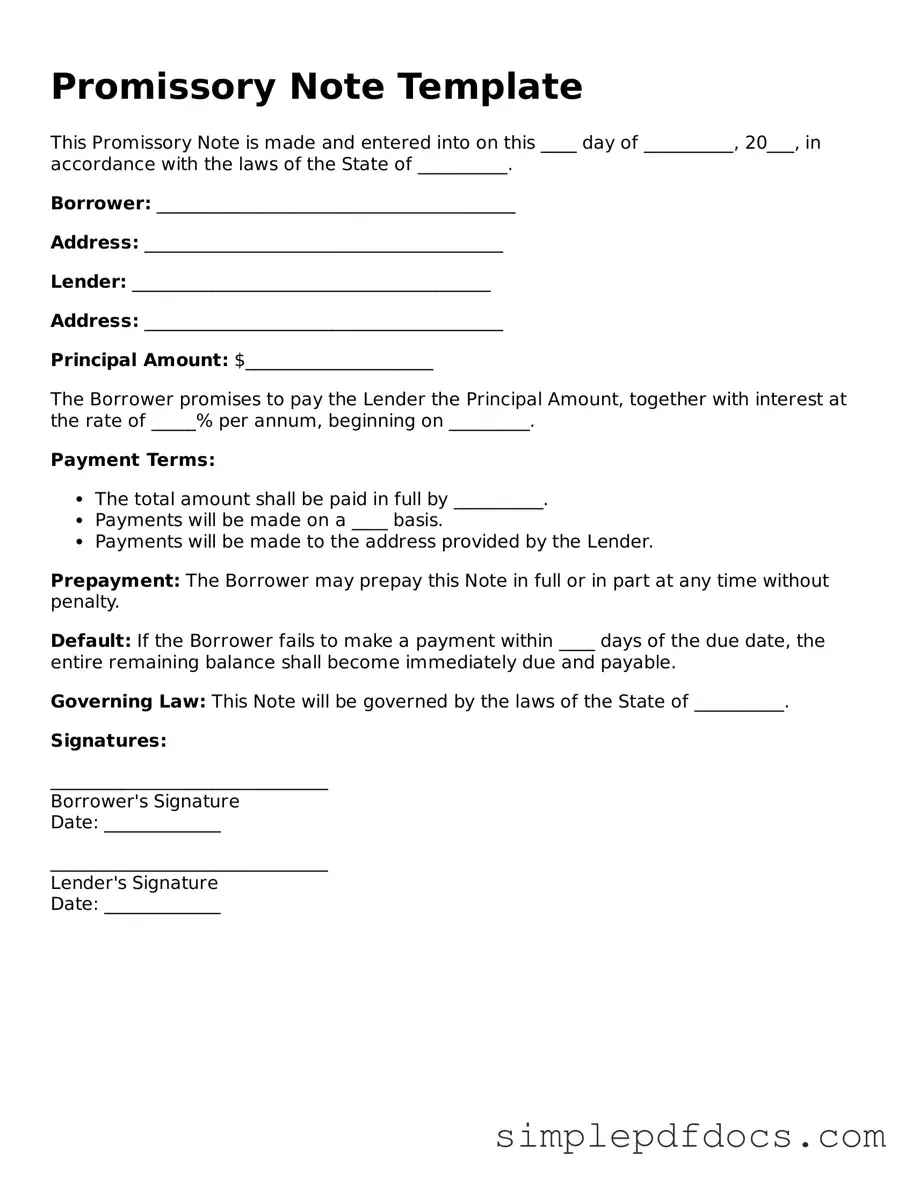When individuals or businesses engage in a loan agreement, a Promissory Note serves as a crucial document that outlines the terms of the loan. This form is more than just a piece of paper; it is a binding commitment between the borrower and the lender. It typically includes important details such as the principal amount borrowed, the interest rate, and the repayment schedule. Additionally, the Promissory Note may specify any collateral involved, which provides security for the lender in case the borrower defaults. Clear terms regarding late fees, prepayment options, and the consequences of non-payment are also commonly included to ensure both parties understand their rights and obligations. By providing a written record of the loan agreement, the Promissory Note helps to prevent misunderstandings and disputes in the future. It is essential for anyone considering a loan to familiarize themselves with this important document, as it lays the foundation for a responsible borrowing experience.
